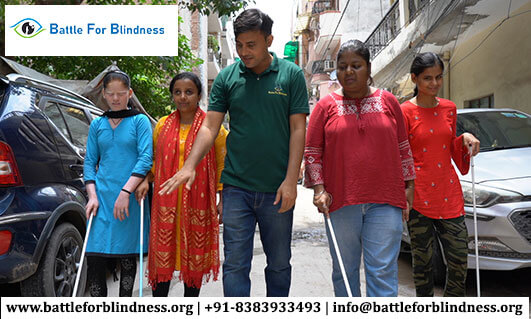
Access to safe and affordable housing is a fundamental human right, yet for millions of visually impaired individuals around the world, this remains a persistent challenge. Equal housing opportunities are critical to fostering independence, dignity, and inclusion for visually impaired people. This blog explores the barriers they face in securing housing and highlights actionable solutions to create a more inclusive society.
Challenges in Housing for the Visually Impaired
-
Lack of Accessible Housing Designs Many housing developments fail to accommodate the needs of visually impaired individuals. Features like tactile pathways, voice-assisted systems, and Braille signage are often overlooked in residential architecture, creating significant barriers to navigation and safety.
-
Discrimination in Housing Markets Discrimination remains a significant hurdle. Landlords and property managers may hold misconceptions about the capabilities of visually impaired tenants, leading to unfair rejections and limited housing options.
-
Financial Constraints Visually impaired individuals often face employment barriers, resulting in limited income. This economic disparity reduces their ability to afford adequate housing or invest in necessary modifications to make homes accessible.
-
Limited Legal Awareness While anti-discrimination laws exist in many countries, visually impaired individuals may not be aware of their rights. This lack of awareness limits their ability to challenge unfair housing practices.
Key Solutions for Equal Housing
-
Inclusive Housing Policies Governments and housing authorities must prioritize policies that promote accessible and affordable housing for visually impaired people. Mandating universal design principles in new housing projects can help bridge the accessibility gap.
-
Financial Assistance Programs Subsidies, grants, and low-interest loans specifically targeted at individuals with disabilities can alleviate the financial burden of securing accessible housing.
-
Raising Awareness and Education Public education campaigns can dispel stereotypes about visually impaired individuals. Training programs for real estate professionals can ensure fair treatment of all prospective tenants.
-
Technology Integration Smart home technology offers a transformative solution. Voice-controlled systems, audio alerts, and automated lighting can enhance the independence and safety of visually impaired residents.
-
Community Support and Advocacy Nonprofit organizations and advocacy groups play a crucial role in bridging gaps. They can offer legal support, raise awareness, and collaborate with governments to implement effective housing programs.
The Road Ahead
Creating equal housing opportunities for visually impaired individuals is not just a matter of compliance; it is a testament to our collective commitment to equity and inclusion. By addressing systemic barriers, promoting inclusive designs, and leveraging technology, we can ensure that visually impaired individuals have access to homes that are not just spaces to live but environments that empower them to thrive.
Let us work together to build a world where housing is a right for all, not a privilege for a few.





